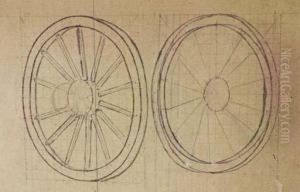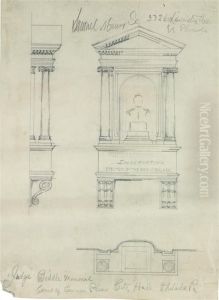Samuel Murray Paintings
Samuel Murray was an American sculptor known for his work in the Beaux-Arts tradition, a movement that deeply influenced American architecture and sculpture at the turn of the 20th century. Born in Philadelphia, Pennsylvania, in 1869, Murray began his artistic journey in a somewhat unconventional manner. Initially, he was more inclined towards painting and started his career as a studio assistant for the renowned American artist Thomas Eakins. This relationship was not just one of mentorship but also of deep artistic collaboration and friendship, significantly shaping Murray's approach to sculpture.
Under Eakins' influence, Murray developed a keen interest in the human form, an interest that would become the hallmark of his sculptural work. He honed his skills at the Pennsylvania Academy of the Fine Arts, where the atmosphere was ripe with the ideals of naturalism and a rigorous study of anatomy, both of which were critical to the Beaux-Arts philosophy. Murray's sculptures, characterized by their realism and attention to detail, often depicted figures from American history and contemporary life, embodying the spirit and challenges of his era.
Throughout his career, Samuel Murray received several commissions for public monuments and busts, contributing to his reputation as a sculptor of national significance. Despite the prominence of his work during his lifetime, Murray's legacy has been somewhat overshadowed by his contemporaries and by the changing tides of art history, which moved away from the Beaux-Arts tradition towards modernism in the mid-20th century.
Murray's approach to sculpture was deeply informed by his belief in the importance of realism and the expressive potential of the human body. His works are notable for their emotional depth and for their meticulous attention to physical details, qualities that reflect his lifelong engagement with the principles of naturalism and his association with Thomas Eakins.
Samuel Murray passed away in 1941, leaving behind a body of work that, while perhaps not as widely recognized today as that of some of his contemporaries, remains an important part of the American sculptural tradition. His sculptures continue to be appreciated for their craftsmanship, historical value, and the insight they provide into the cultural and social dynamics of his time.

